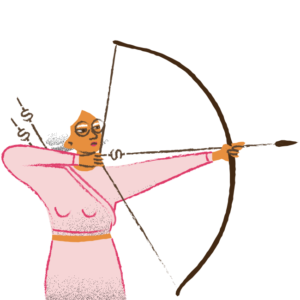What shapes our attitude to money?
The way we think about money is influenced by lots of factors: our family, friends, school, media, and so on. The same is also true of gender norms. From a young age, we are taught how to behave in society, and the different expectations of men and women. Gender norms can be hugely influential. For a long time, society has sent a message that women are “bad at maths”, so no wonder some women are lead to believe that they are “bad with money”.
But young girls don’t start out thinking this way. At 15 years of age, girls are more financially literate than boys,1 but over time women are significantly more likely to report being stressed and overwhelmed by money than men (46% vs 26%).2 This highlights how persistent out-dated gender stereotypes can be.
Just remember: even if you think you are bad with money, it doesn’t mean that you actually are. Pay attention to the financial skills you do have — you probably know a lot more about managing money than you think.
Equal Pay
There’s a lot of reasons why women and gender non-conforming people experience barriers to financial security. One of the major contributors is the gender pay gap. The gender pay gap is the difference between women’s and men’s average weekly full-time equivalent earnings.3 It is shown as a percentage of men’s earnings. As of 2019, the full-time average weekly ordinary earnings for women was 14% less than for men.4

 Do a financial healthcheck
Do a financial healthcheck





